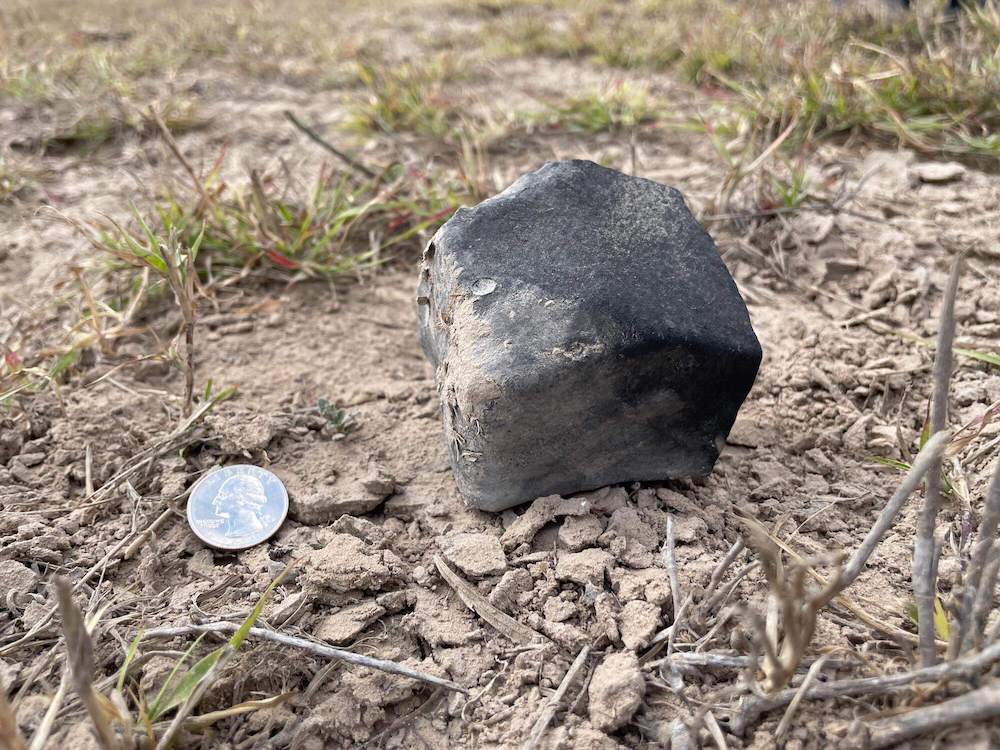Coincidence or connected? Three February fireballs on three consecutive days. The first on 13 February over the west coast of France, the second over Matera, Italy on Valentine’s day, and the third in the U.S. late in the afternoon of the 15th. Oddly, they also coincide with the anniversary of the Chelyabinsk, Russia super bolide and the 2009 Ash Creek, TX meteorite falls.
All three of the new events have also produced meteorites.
Falling materials (possible meteorites) were identified the following morning from NOAA NEXRAD weather radar data by NASA Johnson Space Center scientist Marc Fries. A preliminary report was posted on the NASA website, showing sufficient evidence that space rocks may have survived to land on the ground. They were just waiting to be found.
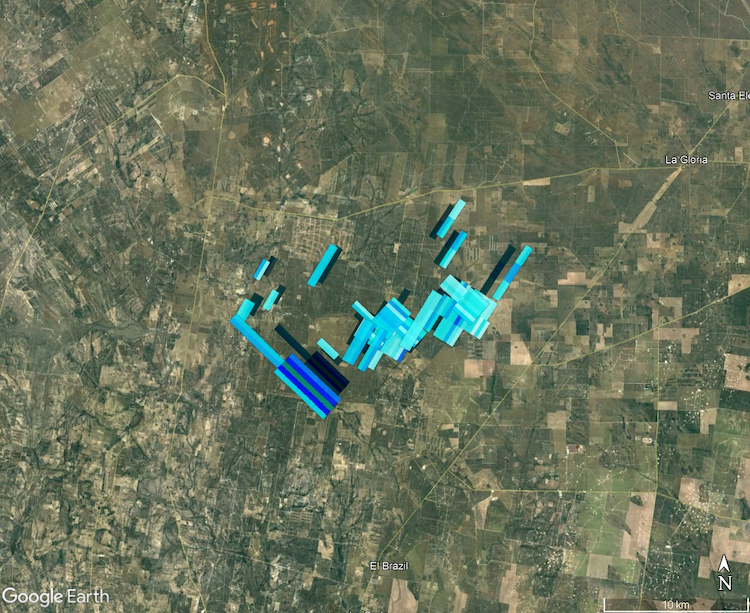
Fries and Fries journeyed to an area in the Rio Grande Valley where sonic booms where heard; from McAllen, west to Nuevo Laredo, and south, beyond the border into Mexico, the boom told a tale of solid material moving through the lower atmosphere. Yet few observations of the bolide were reported because the event occurred against the backdrop of a well-lit sky.
By the time the team arrived in Mission, TX late on the 16th, additional resources including videos, data supplied by the Meteoroid Environment Office at NASA Marshall Space Flight center, and data points from NOAA’s Geostationary lightning mapper, resolved the altitude, speed and trajectory of the bolide. These were combined with wind information to model the area of impact.
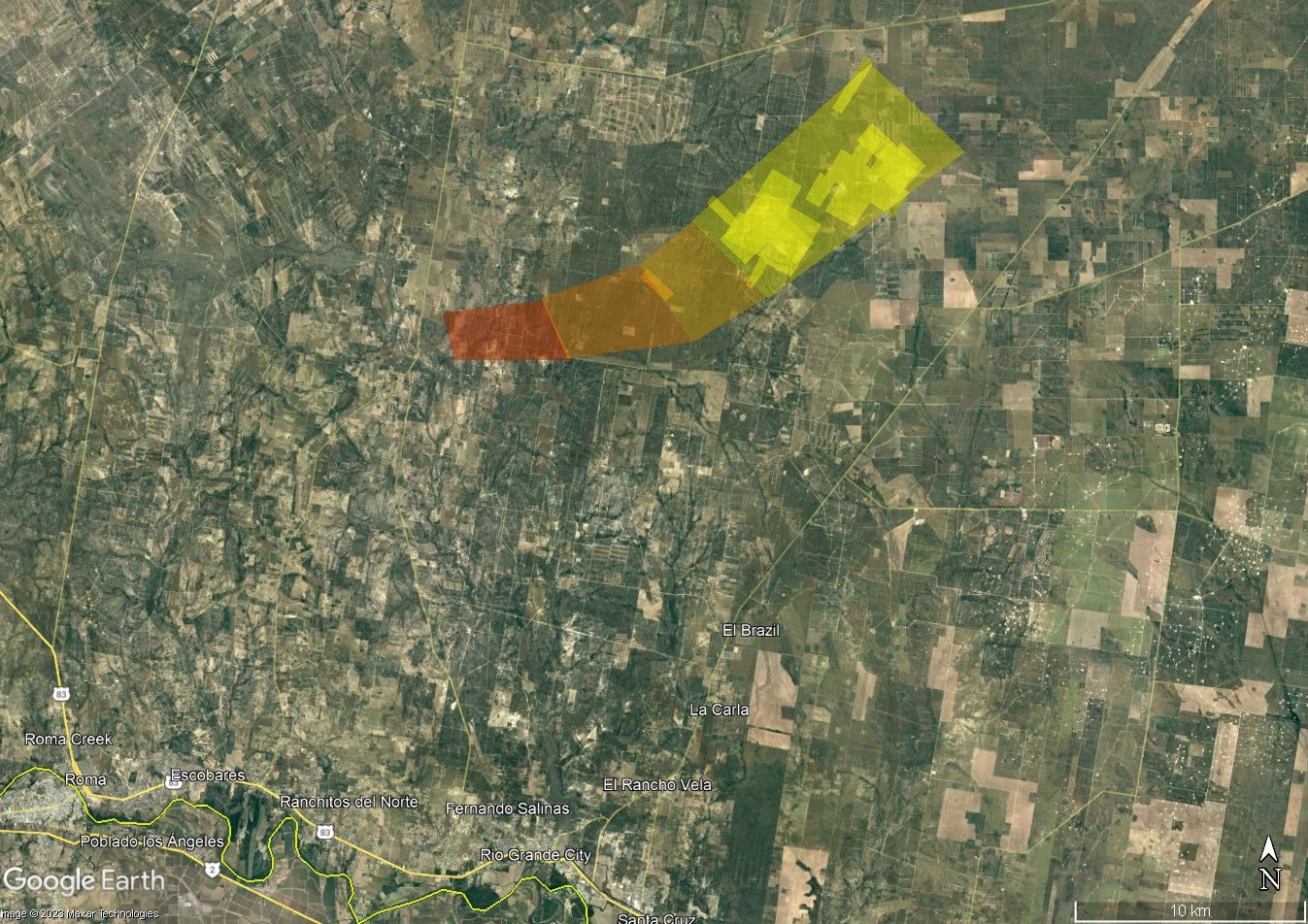
As it turns out, the altitude and speed were not typical of most bolides. It was a little slower and likely survived to a little lower altitude than most. The velocities of most small bodies in space (asteroids and meteoroids) intersect Earth at speeds ranging from 11 kilometers per second (km/s) up to 72 km/s (25,000 mph to 160,000 mph). In contrast, orbital debris closer to Earth is moving 1-7 kilometers per second (ISS is moving at 7.66 km/s). This space rock was moving closer to 9-12 km/s. It also seems to have penetrated deeper in the atmosphere than the average. This would have implications for the amount of material that made it to the ground.
Asteroids and meteoroids rapidly decelerate as they penetrate into increasingly denser portions of the atmosphere, much like throwing a rock into a deep pool of water. The cosmic velocity, entry angle and approach will determine how fast the object decelerates and the location of its terminus - the place where the object has lost most of its cosmic velocity - where optical phenomenon ends and the rocks are near to landing.
The terminus typically occurs about 25km above sea level. In this case, it seems to have made it further down into the atmosphere, perhaps another 5-8 km. This, in turn, may explain why sonic booms from the event were strong and widespread.
The composition of the object is another important factor in determining the amount of surviving material. Most meteoroids, which are made of silicate minerals, lose 90 percent or more of the original mass from frictional heating and melting during atmospheric passage. This melted and vaporized material is what causes the optical phenomena that we call a fireball.
The strength of the material is another factor. Materials that are dense and solid, such as metal, will likely result in a single object that lands. Stoney materials tend to fail and explode from forces exerted on the leading edge of the object. This is what happened to the object in south Texas, leading to the sonic boom heard by so many.
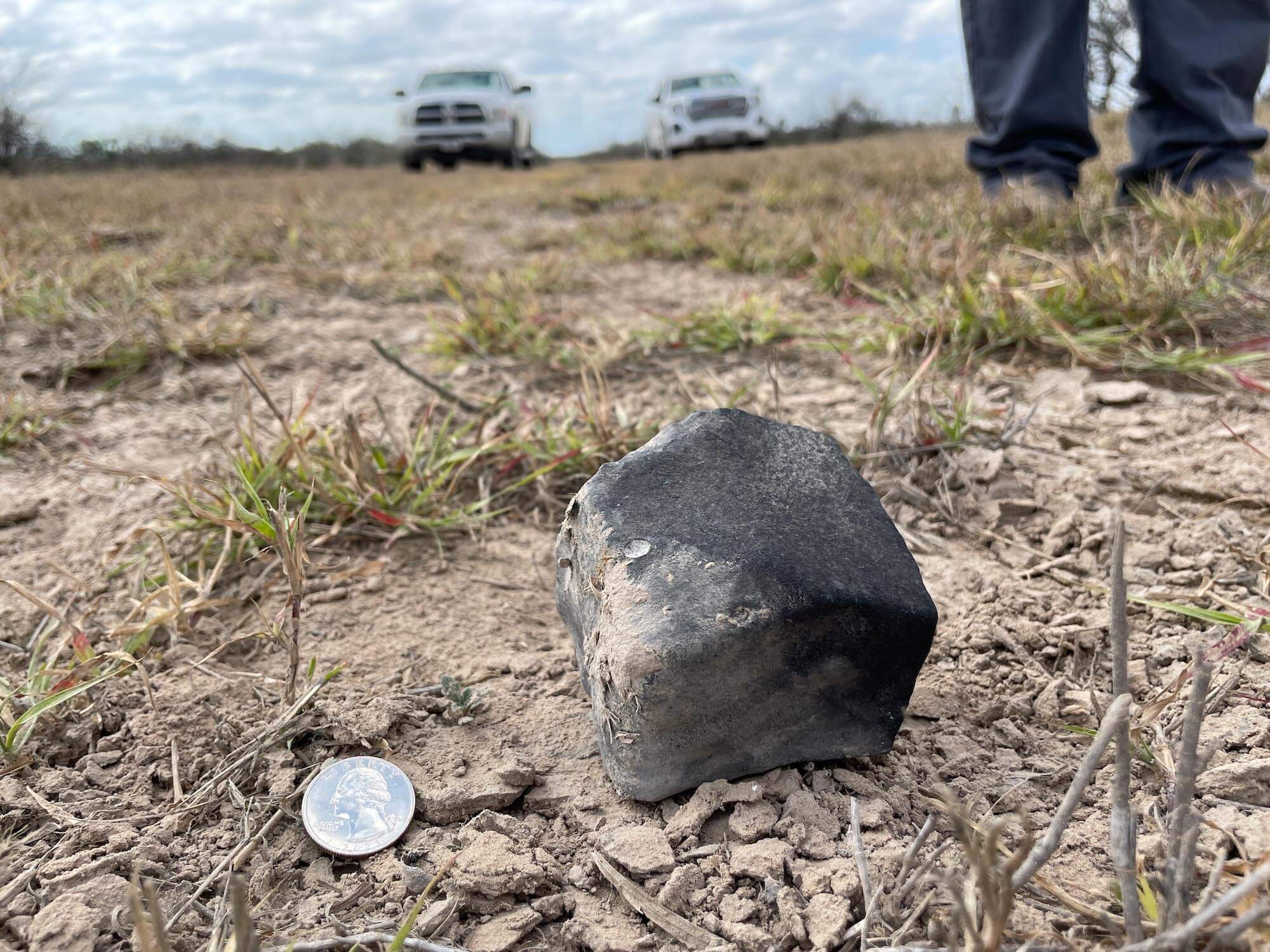
The meteoroid’s estimated pre-atmospheric size was a meter, with a mass of 500kg. If 10 percent survives, the resulting material on the ground could be upward of 50 kilograms. Almost four kilograms have been recovered to date.
Four fully fusion-crusted meteorites recovered from the larger area of the modeled impact area, called a strewn field, show evidence of fragmentation while still moving fast enough to melt. Fusion crust is the residual melted rock that ‘fuses’ to the surface of the rock, analogous to the glaze on pottery. This happens because only a small fraction of the rock is ablating away due to its rocky nature and cold temperature retained from its time in space. Thus the rock that lands on the ground is never hot and, in fact, can condense humidity on the surface as frost under the right circumstances.
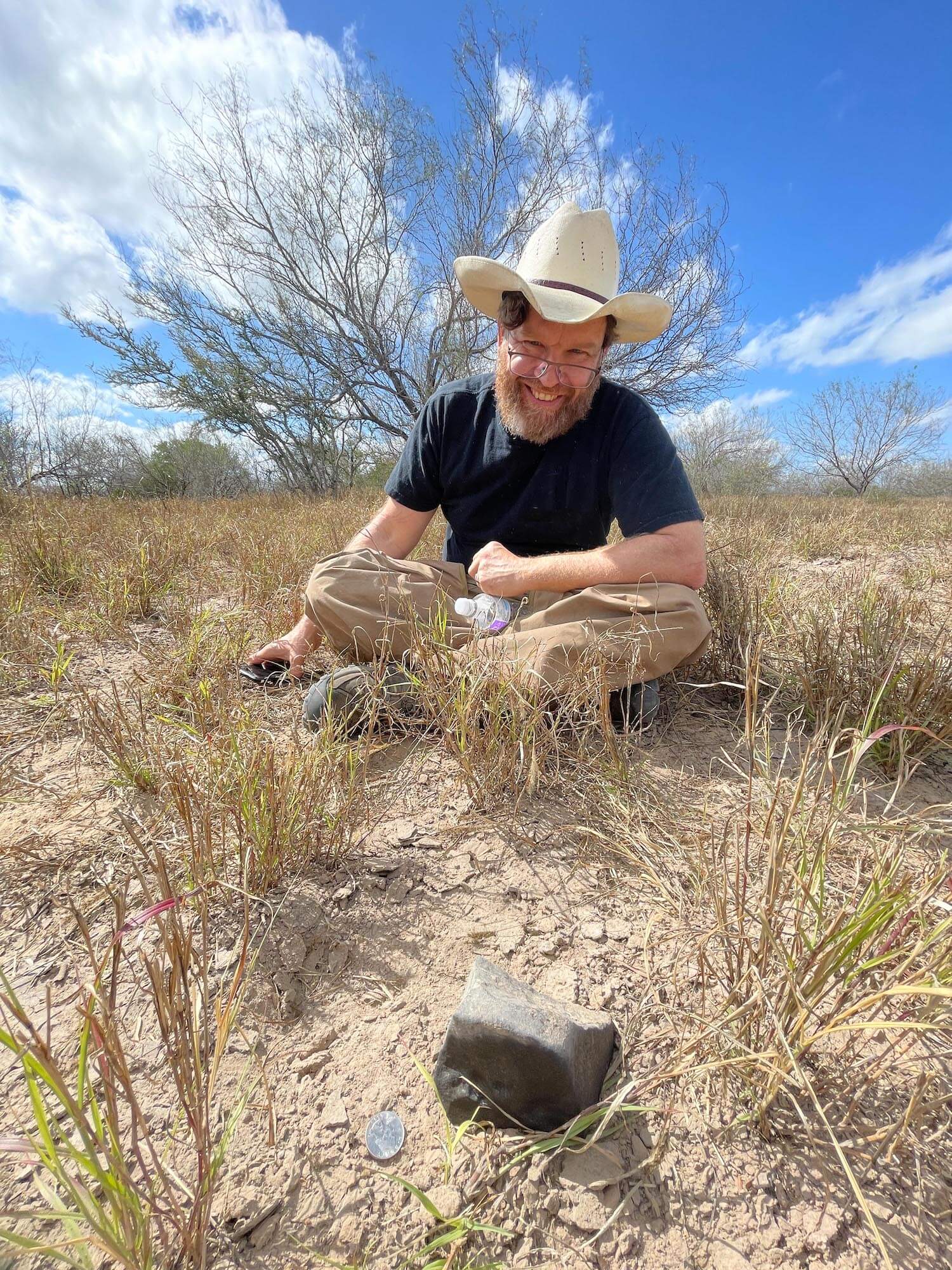
A fifth piece, a small fragment, was found at the end of the day on Sunday the 19th. The exposed interior is a light gray color that sparkles from the finely disseminated metal grains spread throughout. This stone was the result of different kind of fragmentation, perhaps two stones bumping into each other on the way down to the ground, chipping off an edge. The search for its parent rock continues. In the meantime, the fragment was brought to Rice for characterization and analysis. Work is underway to assign a meteorite classification, determining the mineral chemistry and isotopic composition to place the meteorite in the broader context of known asteroidal materials.
Ultimately, the sample will find a home at Texas Christian University, which houses the historic Oscar Monnig Collection of meteorites. The sample is a gift from the property owner to a repository where it can be accessed for science. Study of asteroid remnants such as these enhance our understanding of the origin and evolution of our solar system as well as our local space environment.

